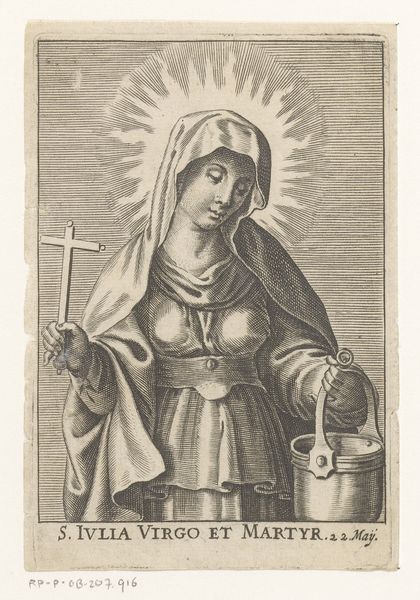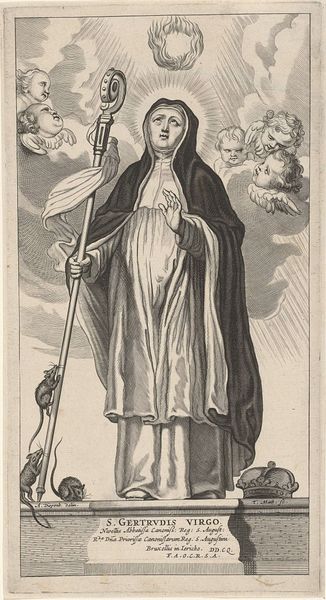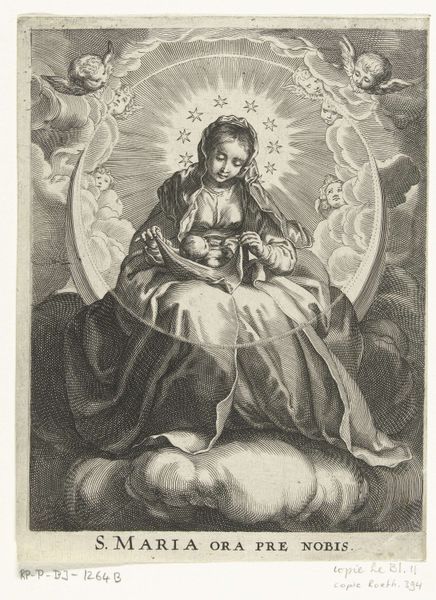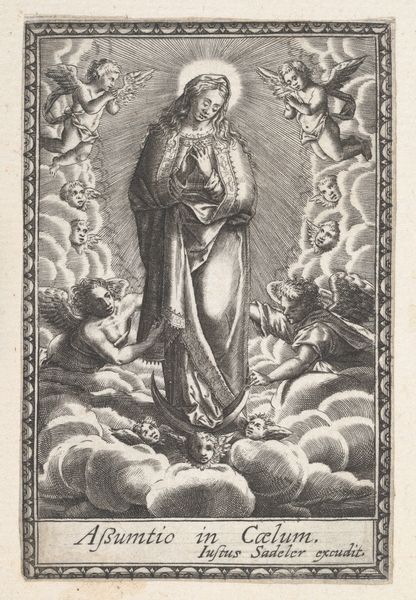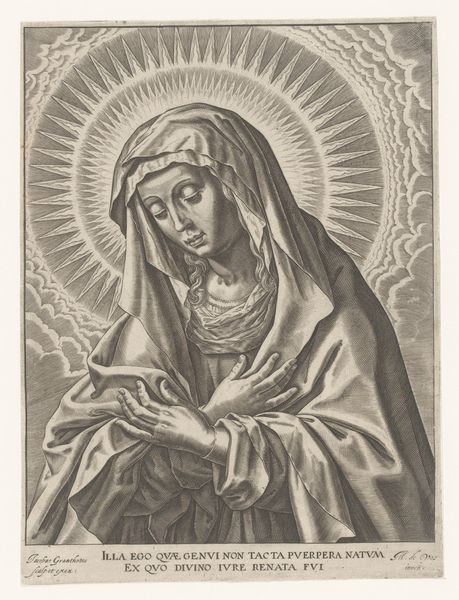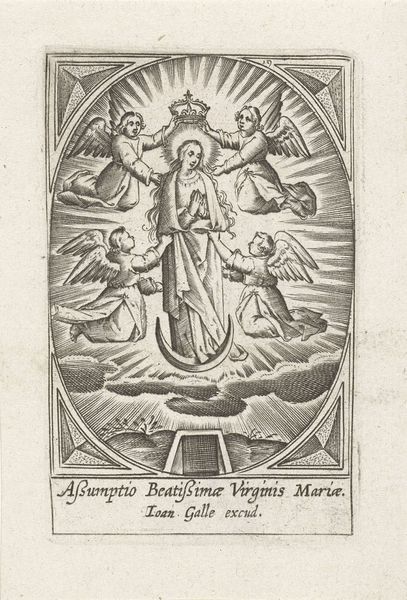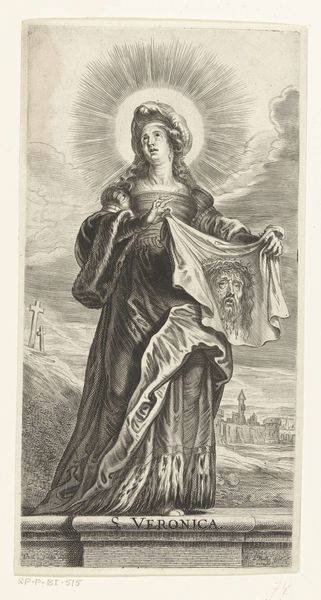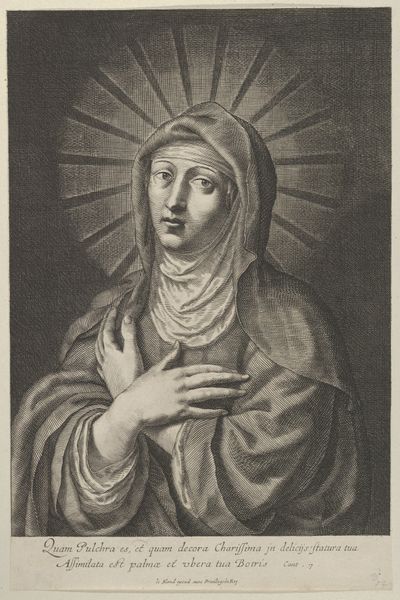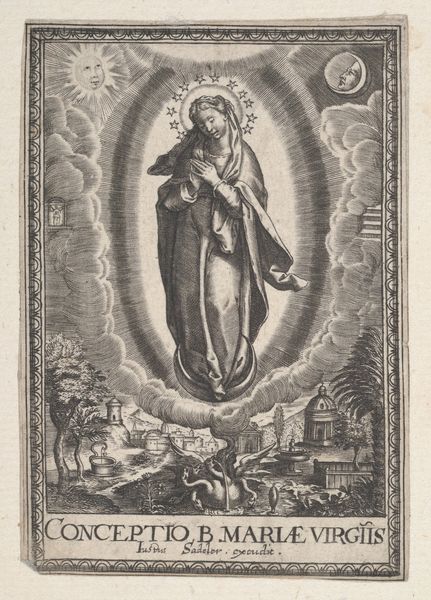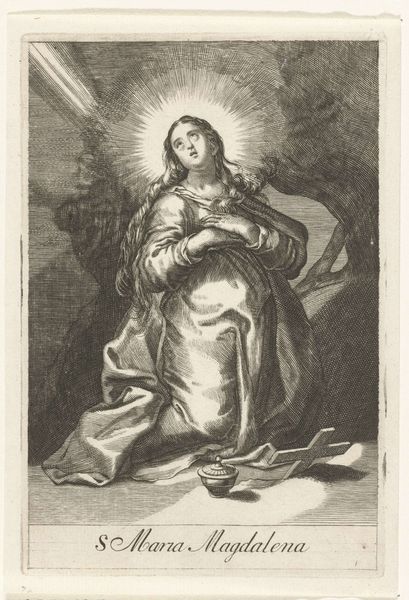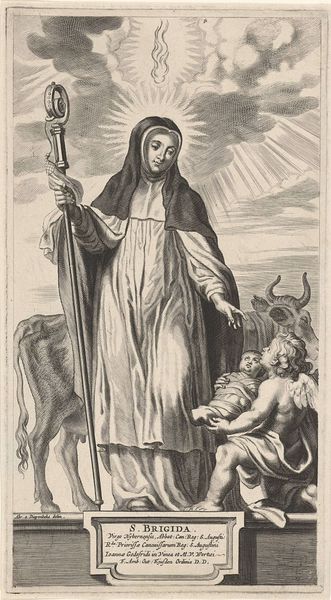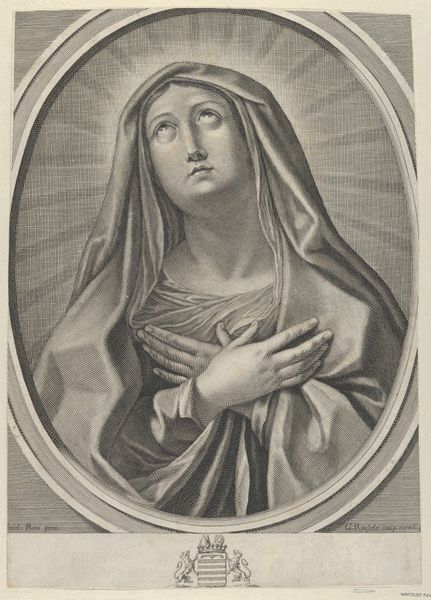
print, engraving
#
portrait
#
allegory
#
baroque
# print
#
old engraving style
#
figuration
#
line
#
history-painting
#
engraving
Dimensions: height 213 mm, width 135 mm
Copyright: Rijks Museum: Open Domain
Editor: So, here we have "Maria als Mater Dolorosa," a 1723 engraving by Bernard Picart, housed in the Rijksmuseum. The striking imagery of swords piercing Mary’s heart evokes such a powerful sense of suffering. What aspects of its history and cultural relevance do you find most compelling? Curator: What I find compelling is how this image operates within, and perpetuates, the evolving narrative around the Virgin Mary in the 18th century. The Mater Dolorosa, or Mother of Sorrows, becomes an increasingly potent symbol during this period. We need to ask: What needs did this imagery fulfill for its audience? Editor: That's a great point. It feels like it’s not just a religious image, but a socio-political one as well. The public display of grief and empathy must have resonated deeply with communities facing their own hardships. How did prints like these circulate and reach such a wide audience? Curator: Precisely! These prints had incredible reach, circulated through devotional networks, personal collections, and even incorporated into other artworks. The act of replicating and disseminating these images contributed to their cultural power. Does the level of detail in the engraving give you any hints as to it’s role in society? Editor: Definitely! It almost suggests the maker valued the symbolism within the imagery more than using modern print styles. I didn't realise that printmaking itself could contribute to meaning! Thanks for broadening my understanding of this piece. Curator: And I learned from your insights! Examining art through this intersection helps us uncover the complex layers of meaning embedded within seemingly simple images.
Comments
No comments
Be the first to comment and join the conversation on the ultimate creative platform.
